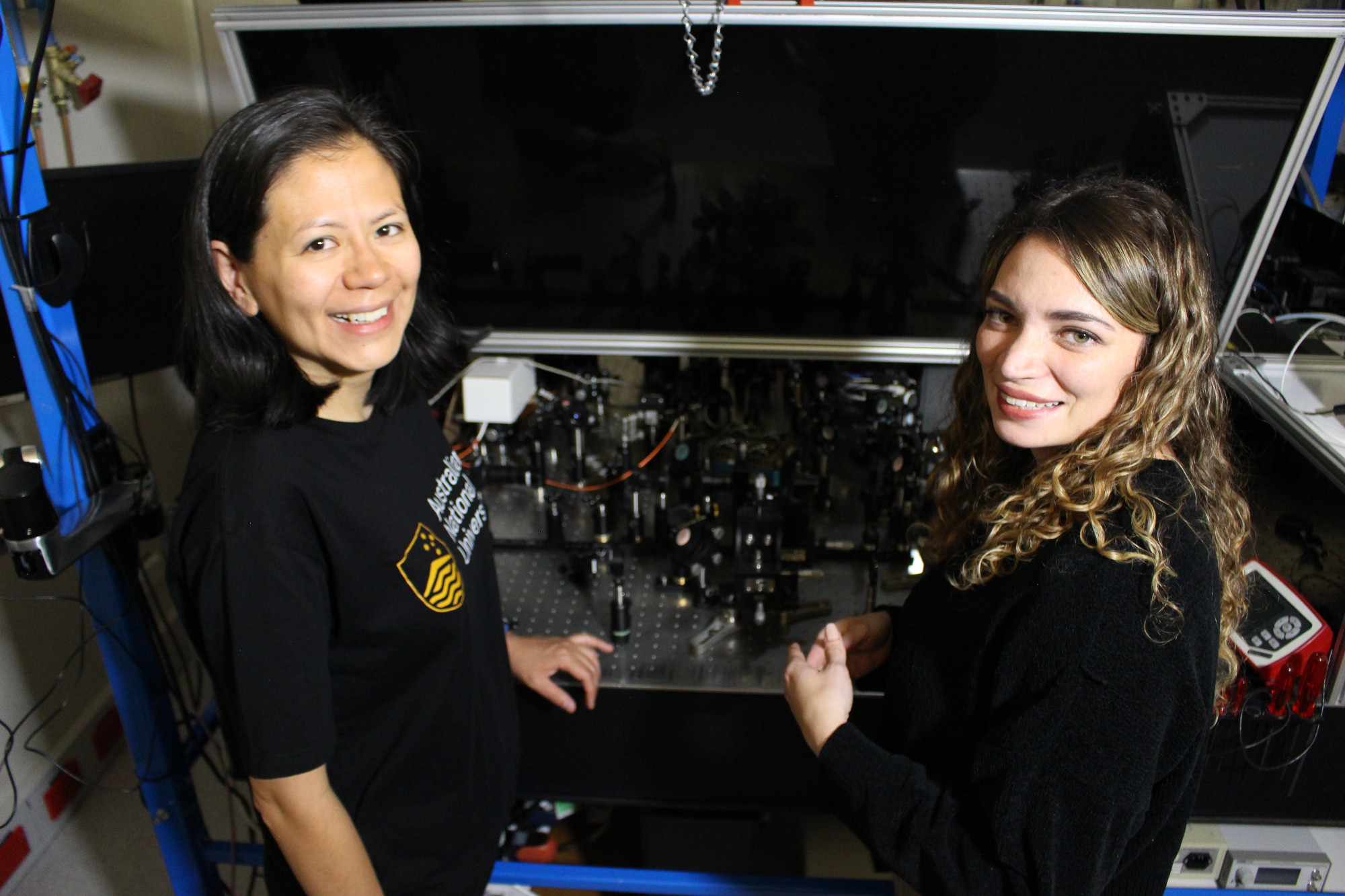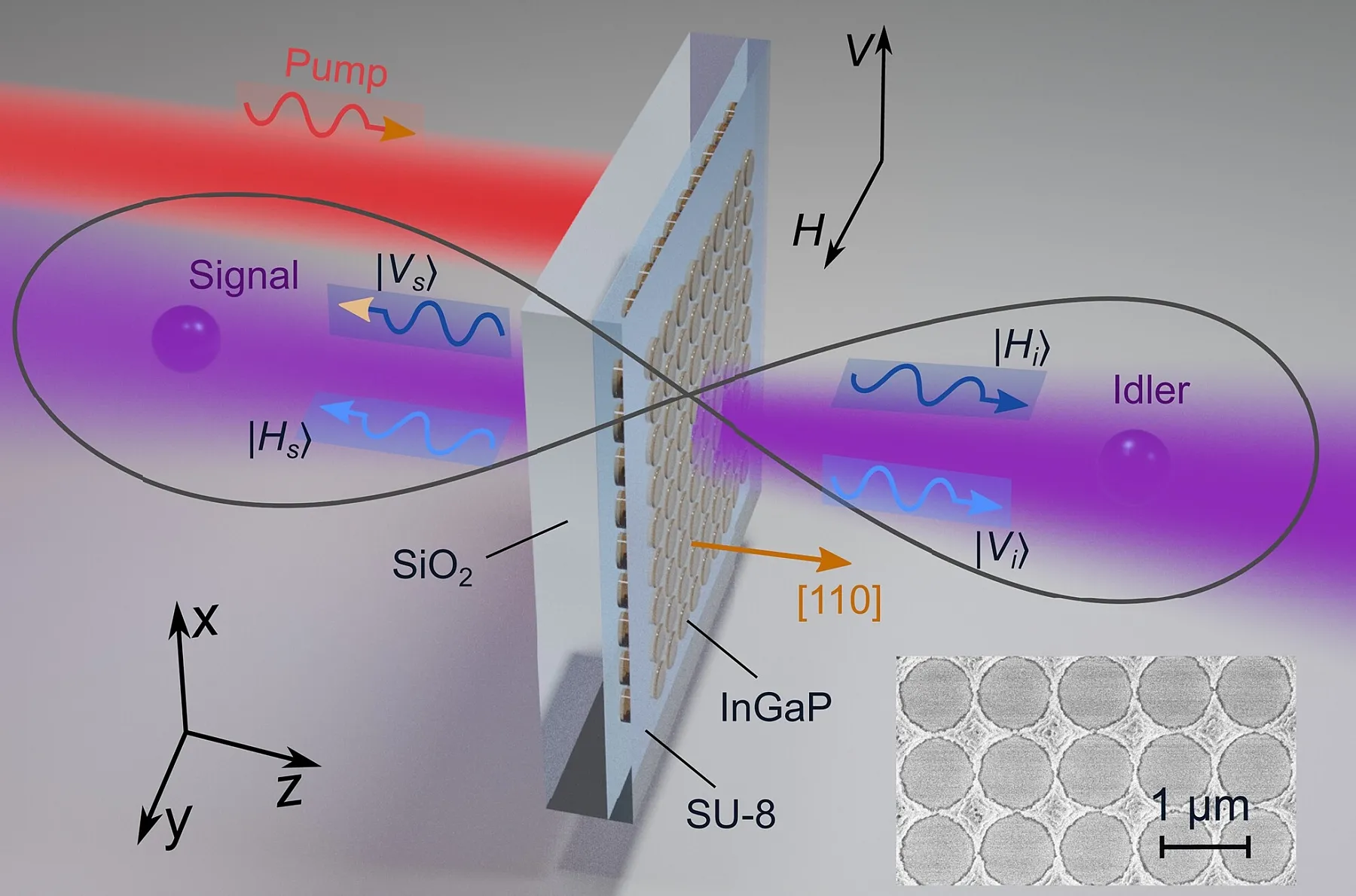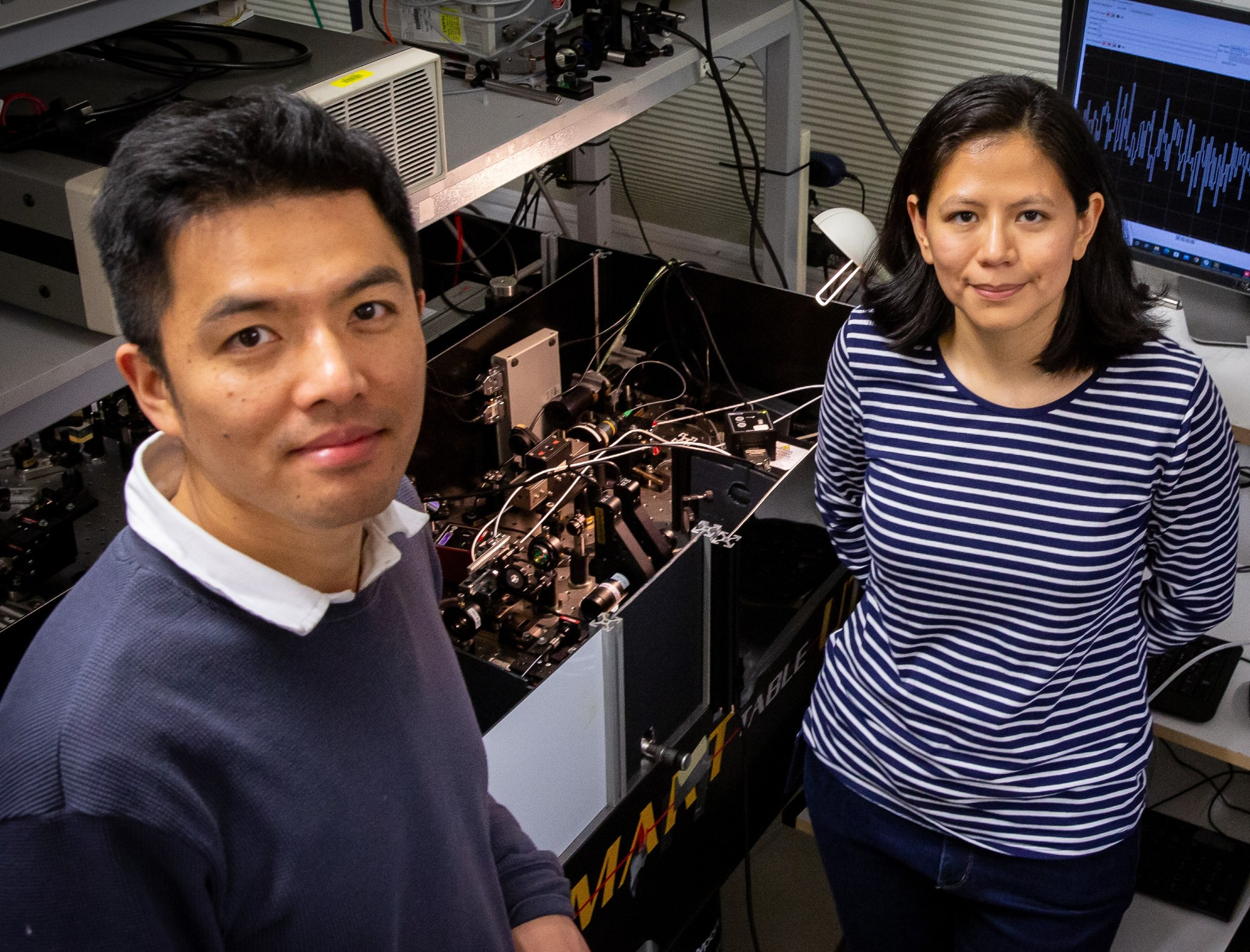Tuning entanglement with an asymmetric metasurface
A new material platform has enabled scientists to create photon pairs whose entanglement can be tuned, from a layer thinner than a human hair.
The photon pairs are created by a metasurface made of indium gallium phosphide (InGaP), which has a nonlinear response that can split a classical photon into two quantum photons. By tuning the wavelength of the initial photon, the two new photons can be generated as fully entangled through their polarisation, not entangled at all, or any value in between, with picosecond control.
The process leverages the asymmetry of the surface, said leader of the research group, Professor Andrey Sukhorukov.
“It’s an exciting new physics principle for preparing tunable quantum states. The importance of asymmetry in nonlinear processes is well appreciated, but this is the first time it has been applied to generating entangled photon pairs,” said Professor Sukhorukov, whose team is from the Electronic Materials Engineering (EME) Department, and the ARC Centre of Excellence for Transformative MetaOptical Systems (TMOS).

Tunable entangled photon pairs are a crucial ingredient for secure quantum communication and encryption, and this is the first work to leverage the miniaturisation of metasurfaces to achieve tunability.
The work is published in Science Advances, and details how the process creates optical resonances to boost the photon pair production.
The key to the new process is the manufacturing process of the metasurface, said co-lead author and EME/TMOS Research Fellow, Dr Tuomas Haggren.
“We were looking at the materials and realised the properties of InGaP were promising – big nonlinear coefficient, a wide band gap and transparent at red wavelengths.”
Reviewing previous work with InGaP, Dr Haggren came across a twist – literally: experiments in the eighties that had explored using a different crystal orientation, to leverage different nonlinear properties that occur in different directions.
So he experimented with rotating the crystal lattice growth, using epitaxial growth at the Australian National Fabrication Facility. Eventually he perfected a method that created a metasurface that had the InGaP crystal structure aligned in the [110] orientation, in contrast with the more common [100] orientation, for which the required nonlinear conditions were almost completely absent.
To build on the nonlinear properties of the [110] orientation, the team wanted to generate optical resonances to enhance the efficiency.

“Modelling showed the best conditions for an optical resonance were with a metasurface design using an array of 500 nm tall pillars, just under 1 µm in diameter, spaced 1 µm apart, sitting on a substrate of silicon dioxide,” said co-lead author and EME/TMOS PhD student, Tongmiao Fan.
A pump laser was injected at 90 degrees to the metasurface from either above or below, spurring the down-conversion of a pump photon into two longer-wavelength photons (single-photon down-conversion); one in the same direction as the pump, and one counterpropagating.
As well as being more than one thousand times thinner than the conventional down-conversion optics, the metasurface has a powerful characteristic – asymmetry.
The two new photons see asymmetric conditions – because of the single-sided silicon dioxide substrate, – which meant the photon pairs could be asymmetric, instead of having a fixed symmetric entangled state. This mechanism could not be achieved with conventional unstructured nonlinear crystals.
The amount of entanglement depended on the pump laser’s wavelength relative to the optical resonance: by changing the detuning, the entanglement of the two photons could be altered from fully entangled to not entangled at all.
The team were delighted that their experiments demonstrated the modelled behaviour, with signal to noise ratio outperforming existing semiconductor flat optics by two orders of magnitude, said co-lead author Dr Jinyong Ma, also from EME and TMOS.

“It is non-trivial to generate polarization entanglement from metasurfaces - we need to ensure high spatial and spectral overlaps between the different quantum processes. The process needs optical resonances close to a flat band, and by leveraging localized resonances, we benefitted from the high-refractive index of the InGaP.
“The novelty of our work is to develop a new physics approach to achieve the tuning of polarization entanglement by changing the pump wavelength, which overcomes the limits of unstructured materials,” said Dr Ma.
As well as entangled polarisation, the photon pairs also were entangled spatially – by having two entangled properties, they qualify as ‘hyperentangled’.
And since the output pairs can be changed as fast as the pump wavelength can be tuned, the entanglement can be tuned with picosecond control.
“It opens up new possibilities in the design of metasurfaces – the approach could be employed for other degrees of freedom – or multiple degrees of freedom, to create hyperentanglement,” said Professor Sukhurokov.
This article was first published by ANU Research School of Physics.



